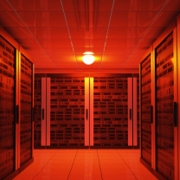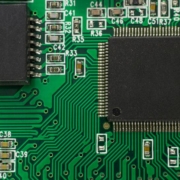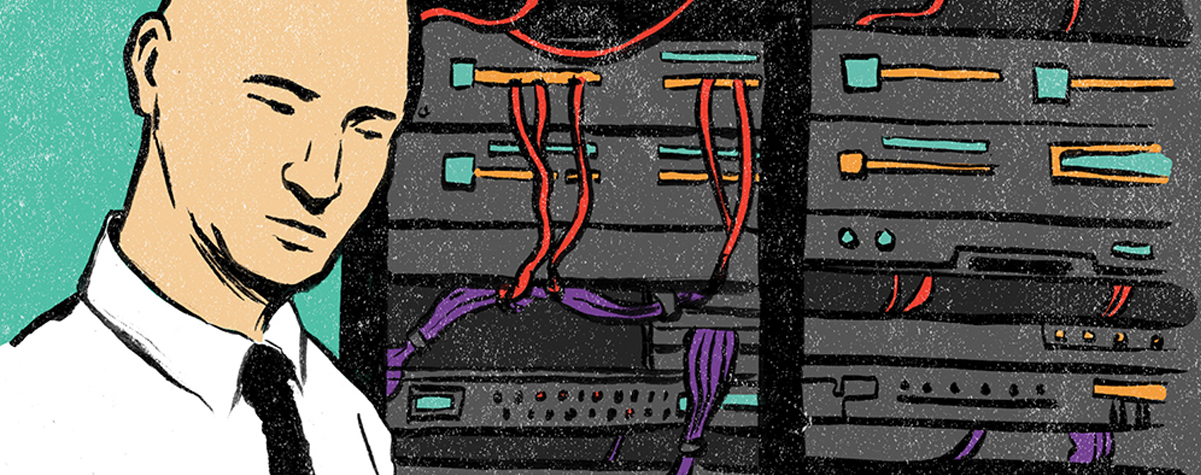Mark Thiele from Switch examines the options in today’s data center industry
In this series, three of the industry’s most well-recognized and innovative leaders describe the problems facing enterprise IT organizations today. In this part, Switch’s Mark Thiele suggests that service offerings often don’t fit customer’s long-term needs.
Customers in the data center market have a wide range of options. They can choose to do something internally, lease retail colocation space, get wholesale colocation, move to the cloud, or all of the above. What are some of the more prevalent issues with current market choices relative to data center selection?
Mark Thiele: Most of the data center industry tries to fit customers into status-quo solutions and strategies, doing so in many cases simply because, “Those are the products we have and that’s the way we’ve always done it.” Little consideration seems to be given to the longer-term business and risk impacts of continuing to go with the flow in today’s rapidly changing innovation economy.
The correct solution can be a tremendous catalyst, enabling all kinds of communication and commerce, and the wrong solution can be a great burden for 5-15 years.
In addition, many data center suppliers and builders think of the data center as a discrete and detached component. Its placement, location, and ownership strategy have little to do with IT and business strategies. The following six conclusions are drawn from conversations Switch is having on a daily basis with technology leaders from every industry.
Data centers should be purpose built buildings. A converted warehouse with sky light penetrations and a wooden roof deck isn’t a data center. It’s a warehouse to which someone has added extra power and HVAC. These remodeled wooden-roof warehouses present a real risk for the industry because thousands of customers have billions of dollars’ worth of critical IT gear sitting in these converted buildings where they are expecting their provider to be protecting them at elite mission critical levels. A data center is by its very nature part of your critical infrastructure; as such it should be designed from scratch to be a data center that can actually offer the highest levels of protection from dangers like fire and weather.
A container data center is not a foundational solution for most businesses but can be a good solution for specific niche opportunities (disaster support, military, extreme-scale homogeneous environments, etc.). Containers strand HVAC resources. If you need more HVAC in one container than another you cannot just share it. If a container loses HVAC, all the IT gear is at risk even though there may be millions of dollars of healthy HVAC elsewhere.
The data center isn’t a discrete component. Data centers are a critical part of your larger IT and enterprise strategies, yet many are still building and/or selling data centers as if they were just a real estate component.
One of the reasons that owning a data center is a poor fit for many businesses is that it is hard to make the tight link needed between a company’s data center strategy and its business strategy. It’s hard to link the two when one has a 1- to 3-year life (business strategy) and the other has a 15- to 25-year life (data center).
The modern data center is the center of the universe for business enablement and IT readiness. Without a strong ecosystem of co-located partners and suppliers, a business can’t hope to compete in the world of the agile enterprise. We hear from customers every day that they need access to a wide range of independently offered technology solutions and services that are on premises. Building your own data center and occupying it alone for the sake of control isolates your company on an island away from all of the partners and suppliers that might otherwise easily assist in delivering successful future projects. The possibilities and capabilities of locating in an ultra-scale multi-company technology ecosystem cannot be ignored in the innovation economy.
Data centers should be managed like manufacturing capacity. Like a traditional manufacturing plant, the modern data center is a large investment. How effectively and efficiently it’s operated can have a major impact on corporate costs and risks. More importantly, the most effective data center design, location, and ecosystem strategies can offer significant flexibility and independence for IT to expand or contract at various speeds and to go in different directions entirely as new ideas are born.
More enterprises are getting out of the data center business. Fewer than 5% of businesses and enterprises have the appropriate business drivers and staffing models that would cause them to own and operate their own facilities in the most efficient manner. Even among some of the largest and most technologically savvy businesses there is a significant change in views on how data center capacity should be acquired.
 Mark Thiele is EVP, Data Center Tech at SUPERNAP, where his responsibilities include evaluating new data center technologies, developing partners, and providing industry thought leadership. Mr. Thiele’s insights in to the next generation of technological innovations and how these technologies speak to client needs and solutions are invaluable. He shares his enthusiasm and passion for technology and how it impacts daily life and business on local, national, and world stages.
Mark Thiele is EVP, Data Center Tech at SUPERNAP, where his responsibilities include evaluating new data center technologies, developing partners, and providing industry thought leadership. Mr. Thiele’s insights in to the next generation of technological innovations and how these technologies speak to client needs and solutions are invaluable. He shares his enthusiasm and passion for technology and how it impacts daily life and business on local, national, and world stages.
Mr. Thiele has a long history of IT leadership specifically in the areas of team development, infrastructure, and data centers. Over a career of more than 20 years, he’s demonstrated that IT infrastructure can be improved to drive innovation, increase efficiency, and reduce cost and complexity. He is an advisor to venture firms and start-ups, and is a globally recognized speaker at premier industry events.


 Uptime Institute, 2019
Uptime Institute, 2019





